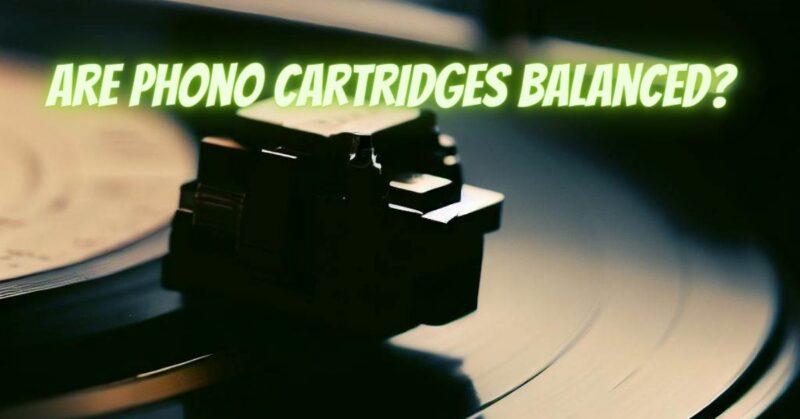Phono cartridges are a vital component of a turntable setup, responsible for translating the grooves of vinyl records into an electrical audio signal. A question that often arises among audiophiles and vinyl enthusiasts is whether phono cartridges are balanced in their design and signal output. In this article, we will explore the concept of balance in phono cartridges, the differences between balanced and unbalanced cartridges, and their implications for your vinyl listening experience.
Balanced vs. Unbalanced Cartridges
- Balanced Cartridges:
- Balanced cartridges, in the context of phono cartridges, refer to those that produce a balanced audio signal.
- A balanced signal is characterized by two identical signals with opposite polarities. In the audio world, this typically means a positive signal and an inverted (negative) signal.
- Balanced cartridges are designed to minimize noise and interference, particularly over longer cable runs, making them suitable for professional audio applications.
- Unbalanced Cartridges:
- Unbalanced cartridges produce an unbalanced audio signal, which consists of a single positive signal and a common ground or reference.
- Most consumer audio equipment, including turntables, amplifiers, and preamps, utilize unbalanced connections (RCA connectors) for simplicity and cost-effectiveness.
Phono Cartridges and Balance
The concept of balance in phono cartridges is somewhat different from what is commonly referred to as balanced audio connections in professional audio settings. Phono cartridges, whether moving magnet (MM) or moving coil (MC), inherently produce an unbalanced audio signal. This is due to the nature of the cartridge’s design, which uses a single coil or magnet to generate the audio signal.
Implications for Signal Quality
While phono cartridges produce unbalanced signals, they are designed to provide high-quality audio reproduction. Here’s how balance affects the performance of phono cartridges:
- Interference and Noise: Balanced connections are primarily used in pro audio to reduce interference and noise in long cable runs. Since turntable setups typically involve short cable runs, the benefits of balanced connections are not as relevant.
- Cartridge Quality: The quality of a phono cartridge is determined by factors such as stylus quality, coil or magnet design, tracking ability, and signal-to-noise ratio. High-quality cartridges can deliver exceptional audio quality despite their unbalanced signal output.
- Preamp and Amplification: Phono cartridges are typically connected to a phono preamplifier (phono stage) before being connected to an amplifier or receiver. The phono preamp is responsible for equalizing and amplifying the low-level phono signal to line level, making it compatible with standard amplifiers.
Phono cartridges used in turntable setups are not balanced in the sense of producing a balanced audio signal like what is found in professional audio equipment. Instead, they generate an unbalanced audio signal. However, the quality of a phono cartridge is determined by factors unrelated to signal balance, such as stylus quality, design, and performance. When choosing a phono cartridge for your turntable, focus on these key factors, as well as compatibility with your equipment, to ensure an enjoyable and high-fidelity vinyl listening experience.


